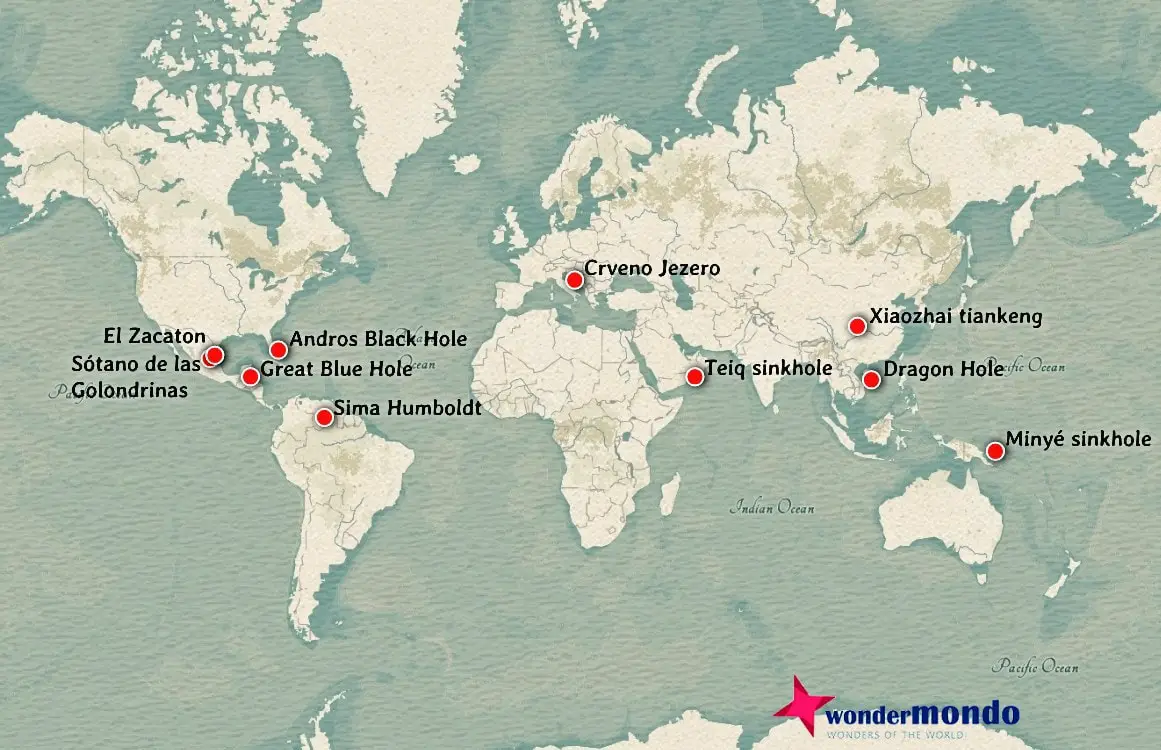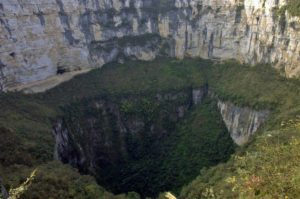World 🢖 North America 🢖 Mexico 🢖 San Luis Potosí
Sinkholes 🢔 Caves 🢔 Geological wonders 🢔 Categories of wonders
Wonder
Sotano de las Golondrinas – Cave of the Swallows
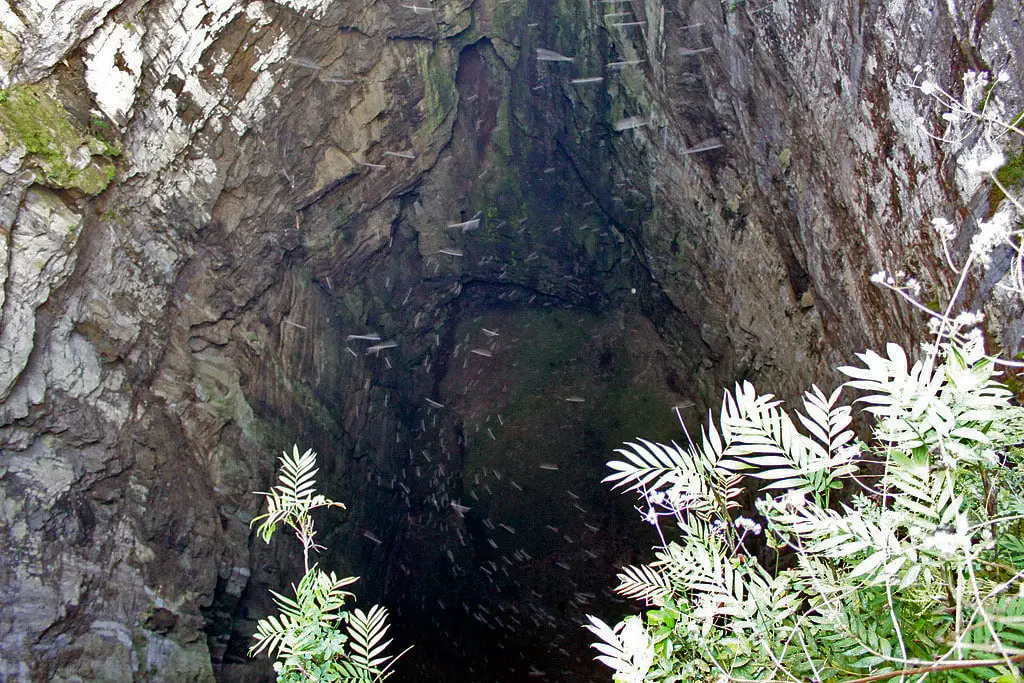
 In short
In short
One of the most impressive sinkholes in the world is Sotano de las Golondrinas – Cave of the Swallows. This hole in the ground is that large that it is nearly impossible to comprehend it – even if one is sitting at the rim of it.
 55.1%
55.1%
GPS coordinates
Location, address
Alternate names
Depth of the sinkhole
Volume of the sinkhole
Depth of the cave
Map of the site
If you see this after your page is loaded completely, leafletJS files are missing.
 In detail
In detail
Giant hole
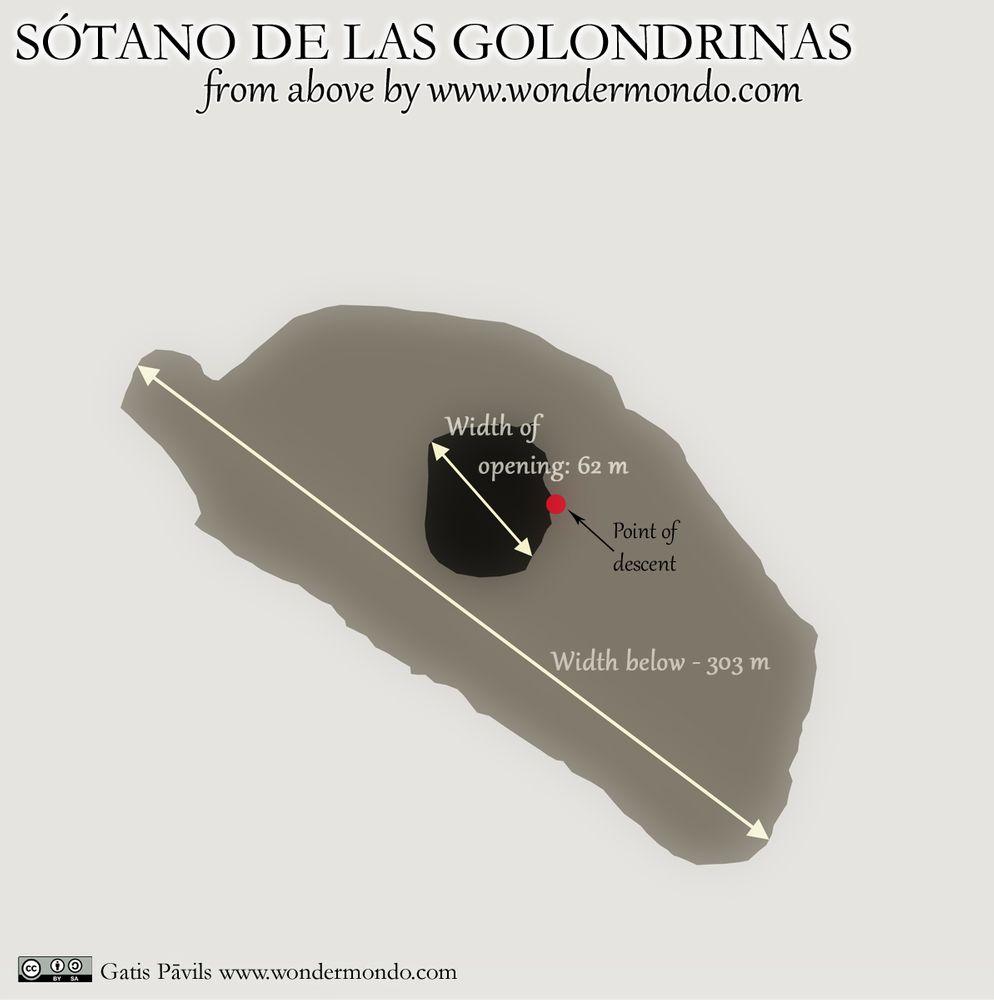
Sotano de las Golondrinas offers one of the deepest freefall drops in the world. The entrance of this sinkhole is elliptical in shape, 49 by 62 m wide. Deeper this natural wonder becomes much wider – at the bottom, it is 303 by 134 m large (some sources state 305 x 440 m). The area of the bottom can be compared to three football fields.
Depth of the entrance shaft, when measured from the lower rim, is 333 m, from the upper one – 372 m.
That’s not all – at the bottom of this entrance shaft, there is a narrow continuation that leads through several steps up to 512 m depth. But few people go there – this is not the main attraction here. This smaller shaft goes directly down. Thus it is possible that the bottom of the sinkhole is covered with a heap of rubble and without it Sotano de las Golondrinas would be more than 500 m deep.
These were pure figures. If frankly – they don’t tell much. Let’s try it otherwise – if you would jump in this hole, you would fall down for 12 seconds. Count it – that’s a lot!
In rainy season there is added effect – several smaller and larger waterfalls are falling directly inside the cave, in one incredible plunge. These certainly are some of the tallest cave waterfalls in the world.
At certain temperatures and dampness there form clouds at the upper part of the cave. Yes, this cave is large enough to have true clouds inside!
Karst formation
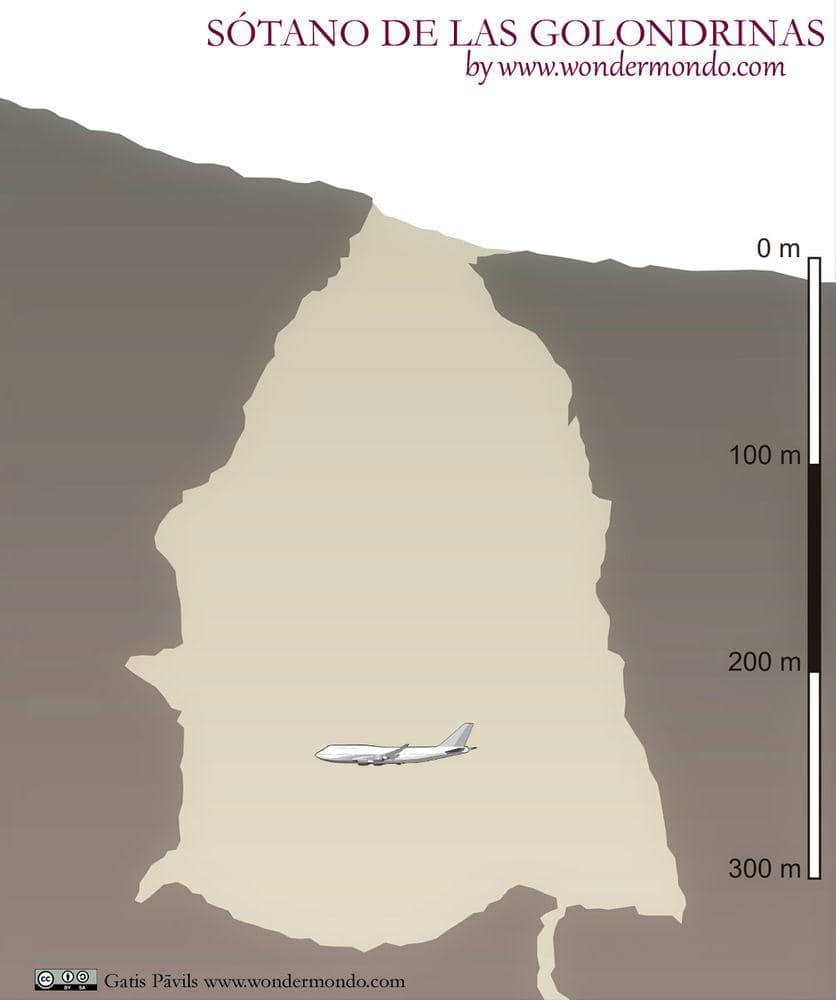
This incredible sinkhole has been shaped by water in a fault of impermeable limestone plain. It has formed in lower Cretaceous limestone and is located in the approximately 500 km long and up to 3,500 m high Sierra Madre Oriental mountains.
Sotano de las Golondrinas by far is not the only karst formation here. Here, around Aquismón town, are located several very deep sinkholes and some very long cave systems including the giant Sistema Purificación, explored to 95 km length and up to 957 m depth. There is even larger sinkhole by volume – Hoya de las Guaguas with 202 m deep entrance shaft and total depth of 430 m. Sótano del Barro 67 km to the east offers even deeper freefall drop – 410 m!
Birds
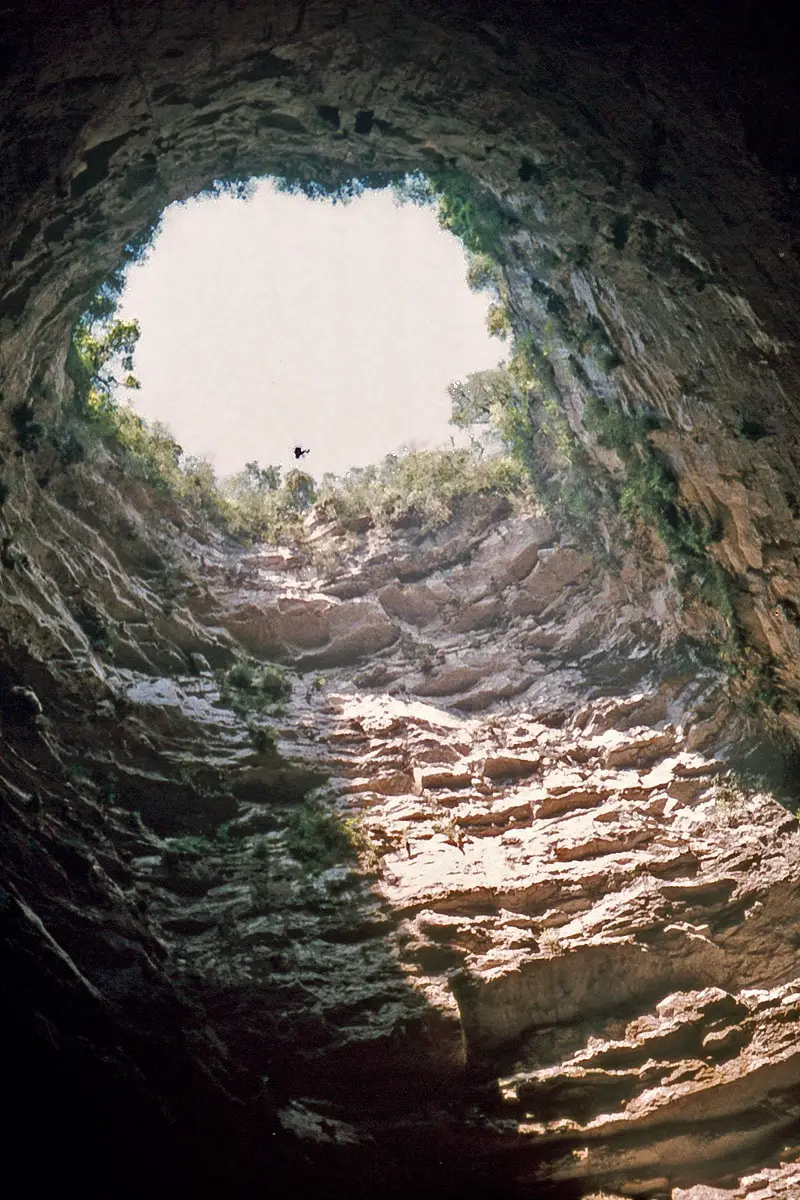
At sunrise, around 6:00, here happen incredible things. Observers at the rim of the sinkhole at first notice small, light grey spots slowly circling far below. Gradually these spots become larger and larger – these are thousands of white-collared swifts (Streptoprocne zonaris Shaw, 1796) rising up from the sinkhole. Birds are moving simultaneously, in a well-studied primeval movement. This spiraling ascent leaves a dizzying and even hypnotic effect on observers. As the birds reach the surface their flight becomes chaotic and erratic – here are awaiting numerous birds of prey. Soon, in a few minutes, all swifts disappear until the evening.
This event continues for some 20 – 30 minutes. It takes place every morning and most likely – for thousands of years. In the evening birds gather above the cave and then possibly quickly, with folded wings and whistle fall down – thousands and thousands of desperate grey birds escaping their predators…
Birds have good reason to live here – nests on the overhanging walls are safe from predators.
Swifts have given a name to the sinkhole – “Sotano de las Golondrinas” in Spanish means “Cellar of the Swallows”.
But here lives another, more spectacular bird. These are the green parakeets (Aratinga holochlora Sclater, 1859) – beautiful green parrots. Also, these birds rise up from the cave flying in spirals. They appear as lively green spots far below.
Guano and fungi
Bottom of the sinkhole is unexpectedly large. It is covered with a thick layer of guano with emerald green moss on it. Water has shaped here small canyons up to 2 m deep. This is a very unusual, chilly, surprising small world. Some people build tents here and in the next morning experience a very surrealistic sunrise.
But stay here is not very pleasant. On the bottom live millipedes, insects, snakes, scorpions. The air is filled with smells, fungi, and bacteria. One can easily get ill with histoplasmosis – a lung disease caused by fungi in guano. The use of a respiratory mask is advised to those who want to inspect all the corners of the sinkhole.
Centre of adventure tourism
Sinkhole is located in a mountainous area, in a tropical forest. This area since ancient times is inhabited by Huastec people and most certainly the enormous hole in the ground is known for thousands of years. Not far from the sinkhole, across the valley, there have been found interesting rock paintings of the procession of warriors led by a young woman.
First known attempt to investigate the sinkhole was taken by Texas cavers T.R.Evans, Charles Borland, and Randy Sterns on December 27, 1966. In 1969 there was discovered the continuation of the cave up to the depth of 512 m.
Back then the access to the sinkhole took several hours – this was an exotic but hard experience.
Now the times have changed – the road almost reaches the sinkhole, the walk takes only some 20 minutes. The extreme and fascinating sights draw many tourists to this natural wonder. The sinkhole is used by many adventure tourists – many are rappelling down and some make BASE jumping inside this incredible hole. Once the bottom of the cave was reached even by a hot air balloon.
The nearby Aquismón town has turned into a small center of tourism and numerous local people have found a new source of income without leaving their home country.
But this natural wonder is also a victim of its own popularity – ornithologists have noticed a decrease in numbers of bird population – possibly due to disturbance of cavers and other tourists.
In recent years there have been introduced limitations. One of such limitations: the descent into the sinkhole is made only from one and the same spot. The descent should be made in the daytime so that birds are not disturbed.
Of course, it is forbidden to leave or throw any things in the hole. It is also forbidden to use helicopters near it and to shout in the hole for an echo. Visiting the sinkhole is not for free anymore.
Descent into abyss
The impression from rappeling down into this sinkhole exceeds any expectations. No human can be prepared to experience such sight. Descent into this giant hole might seem too slow and then – when the floor of the cave comes closer – it turns out that descent is faster than it seemed before. Metal parts of rappelling equipment become very hot and should be cooled down by sprinkling bottled water on it – otherwise, the metal can melt the rope. One should not stop midway too – this might create the overload on equipment.
The way back often is made with specific American rope climbing technology – "ropewalker" – then it takes only some 30 minutes. When going up, the rope is stretching and swinging due to extreme length – this may cause even motion sickness.
Sótano de las Golondrinas is included in the following lists and articles:
 Linked articles
Linked articles
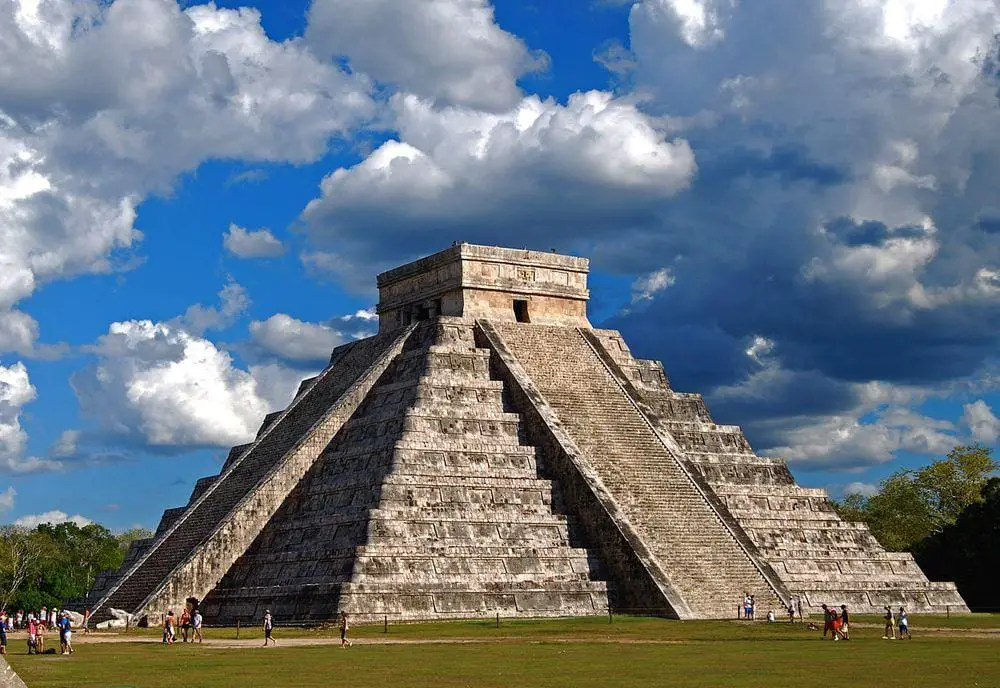
Wonders of Mexico
Few countries in the world can offer such an array of unique and astounding attractions as Mexico.
The area of this country was the cradle of several highly developed indigenous civilizations and some regions in the country are dotted with remnants of ancient cities with temples, palaces, and pyramids.
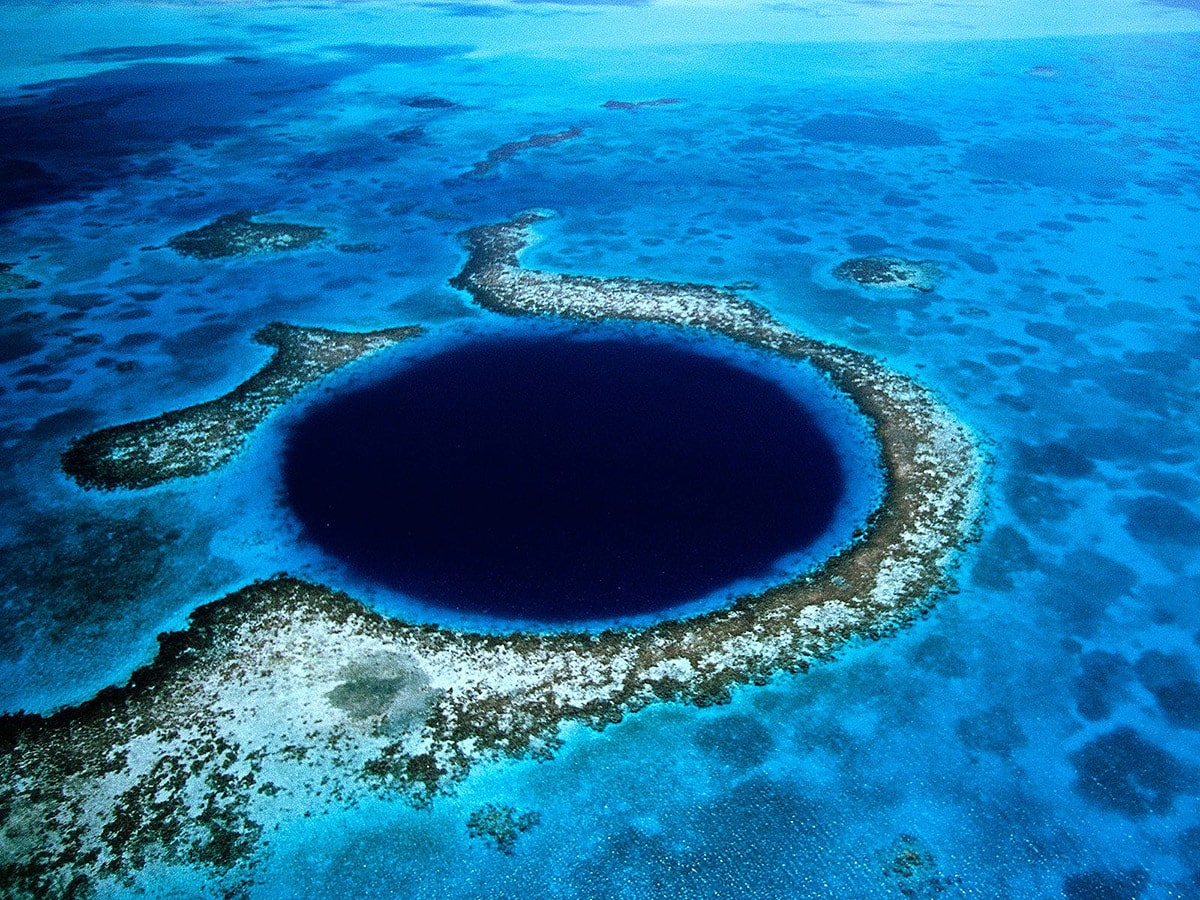
Sinkholes
This category includes outstanding sinkholes – large natural depressions or holes, which for most the part represent collapsed caves.
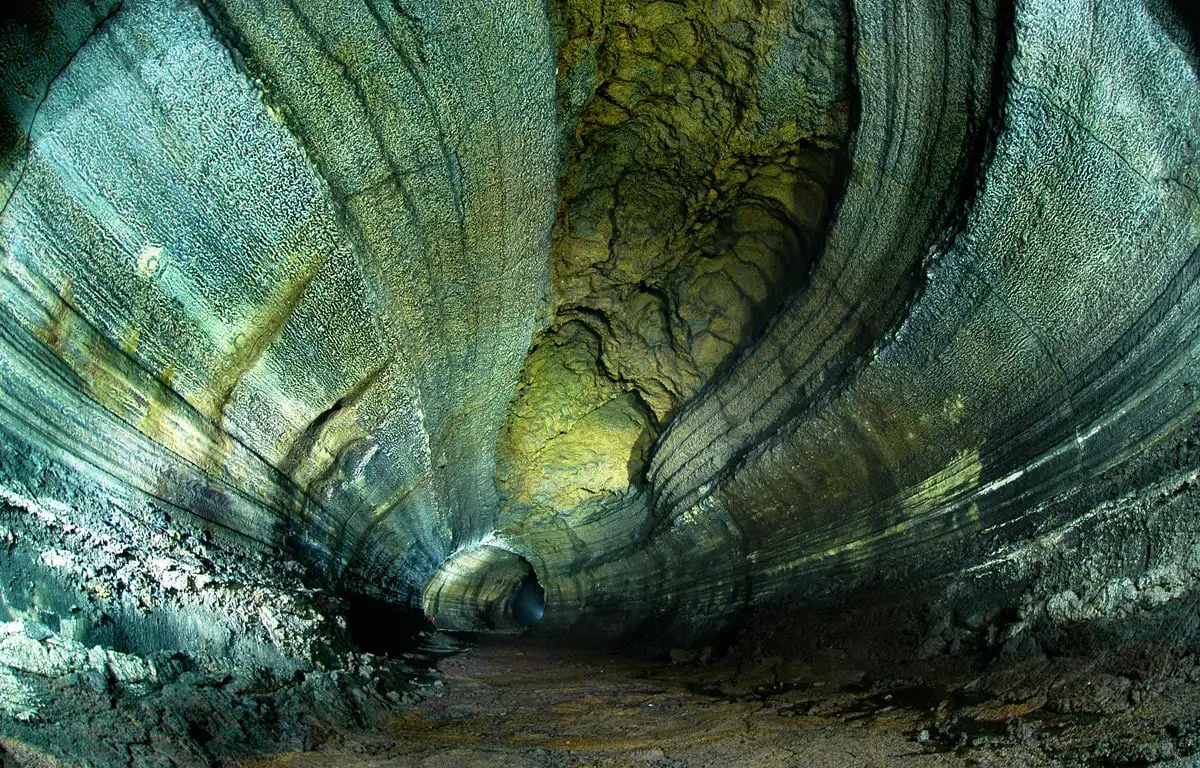
Caves
Every year there are reported exciting discoveries of new caves and discoveries of new qualities such as cave paintings in the ones known before. But there still is a feeling that our knowledge covers just a small part of all these monuments of nature.
Though, those which are known to us, offer a surprising diversity of unusual features and impressive sights.
 Recommended books
Recommended books
Hypogene Karst Regions and Caves of the World
This book illustrates the diversity of hypogene speleogenetic processes and void-conduit patterns depending on variations of the geological environments by presenting regional and cave-specific case studies. The cases include both well-known and newly recognized hypogene karst regions and caves of the world. They all focus on geological, hydrogeological, geodynamical, and evolutionary contexts of hypogene speleogenesis.
Encyclopedia of Caves and Karst Science
The Encyclopedia of Caves and Karst Science contains 350 alphabetically arranged entries. The topics include cave and karst geoscience, cave archaeology and human use of caves, art in caves, hydrology and groundwater, cave and karst history, and conservation and management. The Encyclopedia is extensively illustrated with photographs, maps, diagrams, and tables, and has thematic content lists and a comprehensive index to facilitate searching and browsing.

